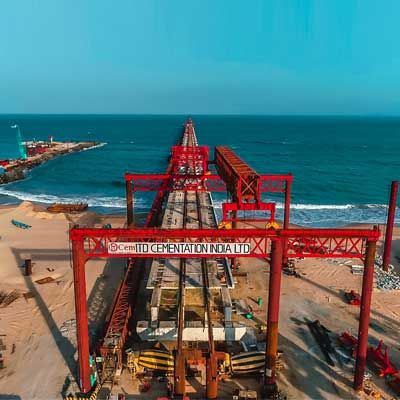- Home
- Infrastructure Transport
- ROADS & HIGHWAYS
- We have bagged five HAM projects with total bid project cost of Rs.56 billion

We have bagged five HAM projects with total bid project cost of Rs.56 billion
<span style="font-weight: bold;">- K Jalandhar Reddy, Executive Director, KNR Constructions</span><br /> <br /> Hyderabad-based KNRCL has a strong reputation for capability of execution and timely completion. <span style="font-weight: bold;">K Jalandhar Reddy, Executive Director, KNR Constructions,</span> shares more on the company's projects and strategies.<br /> <br /> <span style="font-weight: bold;">How has the change in NHAI awarding projects from BOT to EPC and HAM helped companies? How has it improved profitability for your company?</span><br /> HAM is a mix of BOT annuity and EPC models. According to the model, the government will contribute 40 per cent of the project cost in five instalments as milestone payments. The remaining payment will be made on the basis of the assets created and performance of the developer. Here, hybrid annuity means the first 40 per cent payment is made as fixed amount in five equal instalments whereas the remaining 60 per cent is paid as variable annuity amount after the completion of the project depending upon the value of assets created. <br /> As the government pays only 40 per cent, during the construction stage, the developer should find the remaining 60 per cent in the form of equity or loans. There is no toll right for the developer. <br /> Under HAM, revenue collection will be NHAI's responsibility. HAM gives enough liquidity to the developer and the financial risk is shared by the government. KNRCL has participated in a number of HAM biddings and NHAI has recently awarded four HAM projects. Lenders are in the process of submitting final term sheets and sanction. Meanwhile, the company is exploring interest evinced by a developer-cum-investor to invest 49 per cent in four HAM SPVs during the construction phase and acquire them on COD plus two years, as permitted by NHAI. Their due diligence process is underway. By this process, the equity invested will return and can be ploughed back into new HAM projects. The company can also retain a margin on the EPC portion.<br /> <br /> <span style="font-weight: bold;">Tell us about the key strategy applied by the company while bidding for its projects in FY17-18.</span><br /> The company always concentrated on the bottom-line; hence, while bidding for projects, we evaluated factors such as logistics of existing projects, availability of aggregates, etc, and quoted the price with the company's accepted EBITA. Another major strategy is to execute projects in time, thereby increasing profitability.<br /> <br /> <span style="font-weight: bold;">Please list your recently bagged projects under NHAI.</span><br /> We recently won five HAM projects with a total bid project cost of Rs 56.11 billion. Financial closure for four HAM projects is in progress and we have just received the LoI for one HAM project from Karnataka state highways improvement. The total equity requirement for these projects will be about Rs 4.40 billion and various options are being worked out. Debt funding is about Rs 17.65 billion in all the above projects. <br /> The EPC value put together will be Rs 39.75 billion.<br /> <br /> <span style="font-weight: bold;">Are you looking at executing projects in JV? If so, why?</span><br /> In case of large projects that are complex in nature, we may explore a JV partner with strong technical resource capabilities.<br /> <br /> <span style="font-weight: bold;">Tell us about the company's performance in FY2017-18. And considering the current market and opportunities, what are your expectations for FY 18-19?</span><br /> The company achieved a turnover of Rs 19.31 billion and EBITDA of Rs 3.86 billion. The order book position (EPC) is around Rs 60 billion. We can give our guidance for FY18-19 by September 2018.<br />





















